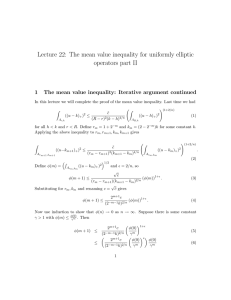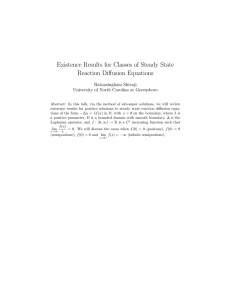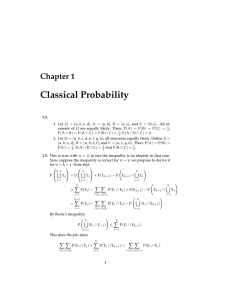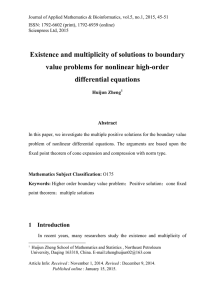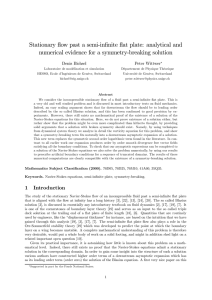Math 5120 Homework 3 Solutions . Setting this equal to the boundary
advertisement
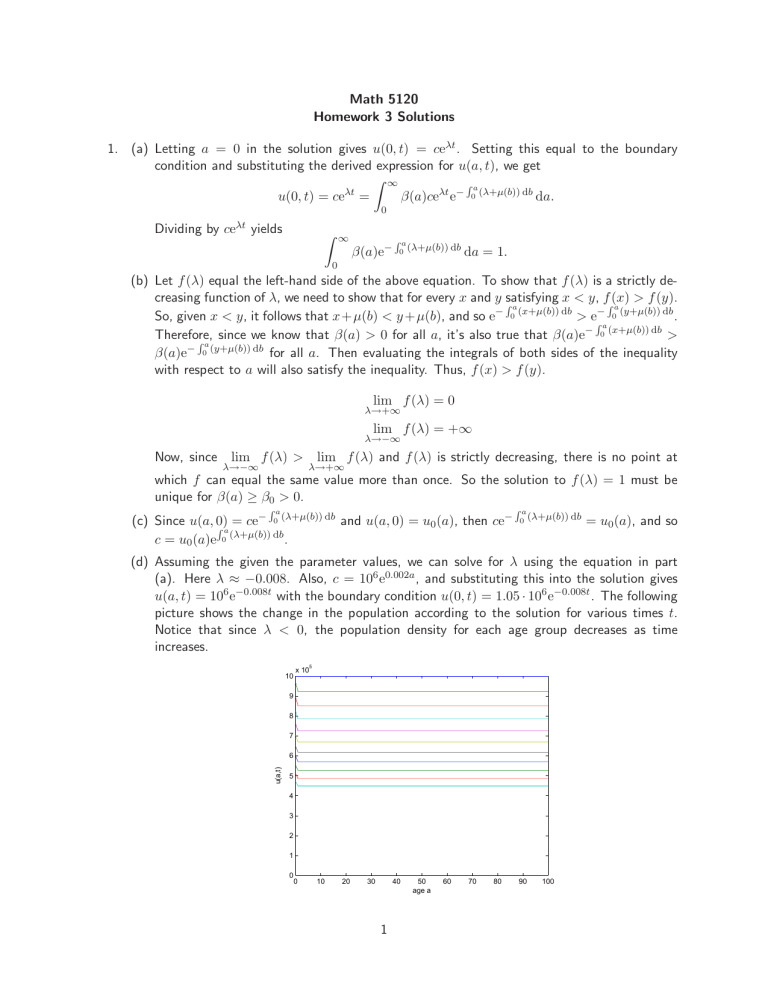
Math 5120 Homework 3 Solutions 1. (a) Letting a = 0 in the solution gives u(0, t) = ceλt . Setting this equal to the boundary condition and substituting the derived expression for u(a, t), we get Z ∞ Ra λt u(0, t) = ce = β(a)ceλt e− 0 (λ+µ(b)) db da. 0 Dividing by ceλt yields Z ∞ β(a)e− Ra 0 (λ+µ(b)) db da = 1. 0 (b) Let f (λ) equal the left-hand side of the above equation. To show that f (λ) is a strictly decreasing function of λ, we need to show that for every x and y Rsatisfying x < y, fR(x) > f (y). a a So, given x < y, it follows that x+µ(b) < y +µ(b), and so e− 0 (x+µ(b)) db > eR− 0 (y+µ(b)) db . − 0a (x+µ(b)) db > Therefore, R a since we know that β(a) > 0 for all a, it’s also true that β(a)e − 0 (y+µ(b)) db for all a. Then evaluating the integrals of both sides of the inequality β(a)e with respect to a will also satisfy the inequality. Thus, f (x) > f (y). lim f (λ) = 0 λ→+∞ lim f (λ) = +∞ λ→−∞ Now, since lim f (λ) > lim f (λ) and f (λ) is strictly decreasing, there is no point at λ→−∞ λ→+∞ which f can equal the same value more than once. So the solution to f (λ) = 1 must be unique for β(a) ≥ β0 > 0. Ra − 0 (λ+µ(b)) db and u(a, 0) = u0 (a), then ce− (c) Since u(a, 0) R a = ce c = u0 (a)e 0 (λ+µ(b)) db . Ra 0 (λ+µ(b)) db = u0 (a), and so (d) Assuming the given the parameter values, we can solve for λ using the equation in part (a). Here λ ≈ −0.008. Also, c = 106 e0.002a , and substituting this into the solution gives u(a, t) = 106 e−0.008t with the boundary condition u(0, t) = 1.05 · 106 e−0.008t . The following picture shows the change in the population according to the solution for various times t. Notice that since λ < 0, the population density for each age group decreases as time increases. 5 10 x 10 9 8 7 u(a,t) 6 5 4 3 2 1 0 0 10 20 30 40 1 50 age a 60 70 80 90 100 2. First note that the solution to the one-dimensional diffusion equation with initial condition c(x, 0) = αδ(x − y) and D = 1 is (x−y)2 α c(x, t) = √ e− 4t . 2 πt (a) To find x(t), we need to solve the inequality c(x, t) ≥ 0.1α for of t. For y = 0 q x in terms √ and x ≥ 0, the boundary of the region of influence is x(t) = −4t ln(0.2 πt). (b) Time evolution of the boundary x(t) 2.5 2 x(t) 1.5 1 0.5 0 0 1 2 3 4 t 5 6 7 8 (c) Note that for all t > t∗ = 25 π , x(t) is not defined, and so the inequality in (a) is not satisfied, leaving the region of influence empty. 2


